
The Decapoda or decapods are an order of crustaceans within the class Malacostraca, including many familiar groups, such as crayfish, crabs, lobsters, prawns, and shrimp. Most decapods are scavengers. The order is estimated to contain nearly 15,000 species in around 2,700 genera, with around 3,300 fossil species. Nearly half of these species are crabs, with the shrimp and Anomura including hermit crabs, porcelain crabs, squat lobsters making up the bulk of the remainder. The earliest fossil decapod is the Devonian Palaeopalaemon.
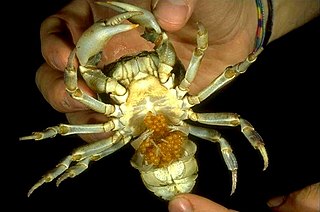
Pleocyemata is a suborder of decapod crustaceans, erected by Martin Burkenroad in 1963. Burkenroad's classification replaced the earlier sub-orders of Natantia and Reptantia with the monophyletic groups Dendrobranchiata (prawns) and Pleocyemata. Pleocyemata contains all the members of the Reptantia, as well as the Stenopodidea, and Caridea, which contains the true shrimp.

Penaeidae is a family of marine crustaceans in the suborder Dendrobranchiata, which are often referred to as penaeid shrimp or penaeid prawns. The Penaeidae contain many species of economic importance, such as the tiger prawn, whiteleg shrimp, Atlantic white shrimp, and Indian prawn. Many prawns are the subject of commercial fishery, and farming, both in marine settings, and in freshwater farms. Lateral line–like sense organs on the antennae have been reported in some species of Penaeidae. At 210 metres per second (760 km/h), the myelinated giant interneurons of pelagic penaeid shrimp have the world record for impulse conduction speed in any animal.
Melicertus is a genus of "king" prawns, comprising eight species which were previously classified as members of the genus Penaeus:

Acetes is a genus of small shrimp that resemble krill, which is native to the western and central Indo-Pacific, the Atlantic coast of the Americas, Pacific coast of South America and inland waters of South America. Although most are from marine or estuarine habitats, the South American A. paraguayensis is a fresh water species. Several of its species are important for the production of shrimp paste in Southeast Asia, including A. japonicus, which is the world's most heavily fished species of wild shrimp or prawn in terms of total tonnage.

The A. B.Freeman School of Business is the business school of Tulane University, located in New Orleans, in the U.S. state of Louisiana. The school offers undergraduate programs, a full-time MBA program and other master's programs, doctoral programs, and many executive education programs. It was a charter member of the Association to Advance Collegiate Schools of Business in 1916.

Burkenroad Reports are widely circulated financial reports on small- to medium-sized companies around the Gulf Coast that are traditionally under-followed by bulge bracket stock analysts. Colloquially the Burkenroad-followed companies are referred to as "stocks under rocks". The reports are published by the Freeman School of Business at Tulane University. Under faculty supervision, students work in small groups to produce the reports after visiting companies and interviewing top management. This procedure gives students the opportunity to develop practical stock analysis skills.
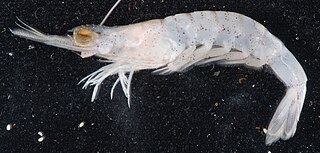
Rimapenaeus is a genus of prawns. It comprises six species, including the "roughneck shrimp", Rimapenaeus constrictus:
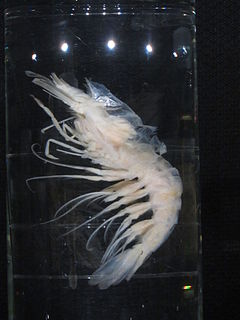
Benthesicymus is a genus of prawns, containing the following species:
Anne Maree Judkins is a retired female track and field athlete from New Zealand who specialised in racewalking.

Metapenaeopsis, the velvet shrimps, is a prawn genus in the family Penaeidae. It contains these species:
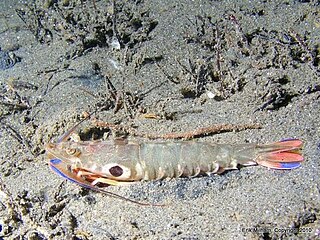
Sicyonia is a genus of prawns, placed in its own family, Sicyoniidae. It differs from other prawns in that the last three pairs of its pleopods are uniramous, rather than biramous as seen in all other prawns.

Litopenaeus is a genus of prawns, formerly included in the genus Penaeus. It contains five species:
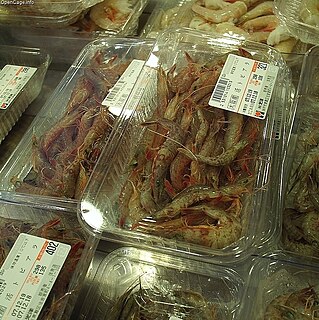
Trachysalambria is a genus of prawns, containing ten species. It was erected in 1934 by Martin Burkenroad, as a subgenus of Trachypenaeus, with T. curvirostris as its type species. That subgenus was elevated to the rank of genus in 1997 by Isabel Pérez Farfante and Brian Kensley. The ten species are:

Martin David Burkenroad was an American marine biologist. He specialized in decapod crustaceans and fisheries science.
Funchalia is a genus of deep-water prawns of the family Penaeidae. Six species are currently recognised:

Farfantepenaeus duorarum is a species of marine penaeid shrimp found around Bermuda, along the east coast of the United States and in the Gulf of Mexico. They are a significant commercial species in the United States and Cuba.

Christina Marie Burkenroad Sandoval is a footballer who plays as a forward for Liga MX Femenil club CF Monterrey. In January 2016, she was drafted by the Orlando Pride in the National Women's Soccer League. Born and raised in the United States, she has dual Mexican-American citizenship.

Hymenopenaeus is a genus of prawns containing 17 species.

Solenocera is a genus of prawns in the family Solenoceridae. Solenocera occur from 0 to 2,067 meters deep in the ocean.
















